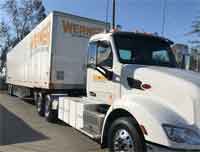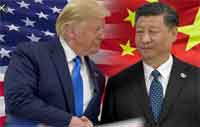| |
|
| |
|
 |
Supply
Chain by the Numbers |
| |
|
| |
- Jan. 16, 2020 -
|
| |
|
| |
|
| |
|
| |
US Demographics Headed in the Wrong Direction, Some Would Say; Solid 2019 Holiday Sales Numbers; Werner to Pilot Full Electric Trucks; US Appears to Do Well in Trade Pact |
| |
|
| |
| |
| |
| |
1.73 |
 |
That is the latest measure of the US fertility rate, defined as the number of births a woman is expected to have over her lifetime, according to data from the Centers for Disease Control and Prevention this week. That in fact, is an all-time low. A rate of 2.10 births per woman is needed for a generation to replace itself, the CDC says. "The bottom line is the size of the American family has changed a lot over time, for historical reasons and societal factors," said John Santelli, professor of population and family health at Columbia Mailman School of Public Health. This trend has seismic economic, societal and supply chain implications, favoring, for example, broader use of automation to compensate for a lack of your workers. More dire is the problems this will cause in terms of the ratio sat of workers to retirees. Demography is destiny, as the saying goes.
|
|
|
| |
| |
|
|
 |
That’s how many hours it will take to charge the battery of a new all-electric tractor from a trio of companies, which are truck OEM Peterbilt, truck component maker Meritor and technology provider TransPower. Truckload carrier Werner has agreed to a year-long test of the concept with a single truck that will be dedicated to a specific customer in the Los Angeles area. The new tractor will be able to haul 80,000 pounds and will have zero emissions. Funding for the tractor was provided by the California Climate Investments, a statewide program that puts cap-and-trade dollars the state generates to work reducing greenhouse gas emissions. The interest in electric trucks remains sky high, though with concerns about range and costs remaining. Tesla now says it will begin limited production of its much anticipated electric trucks sometime in 2020, with a ramp up in 2021 for a truck initially promised for 2019.
|
| |
| |
|
| |
| |
$200 Billion |
 |
That is the value of the amount of US goods China has agreed to purchase over the next two years as part of the "phase one" trade deal announced this week. The additional purchases will come on top of the 2017 US export numbers, not last year's levels impact by the tariff wars. The phase one deal is seen by many as a form of truce and includes concessions by the Chinese to take a tougher stance on the theft of intellectual property and coercing US companies to reveal technology secrets. But the agreement also includes targets for significant increases in imports of US goods by China, specified in detail by product type, from hair clippers to steam turbans, with the increase it US manufactured goods imports is about $77 billion over two years. Energy, agricultural goods, and services make up the rest. Some tariffs on Chinese imports will carry on however.
|
| |
| |
| |
| |
| |
|
|
|
| |
 |
 |
| |
 |
![]() |
 |
|
| |
 |
Feedback |
|
|
|
![]()
|
No Feedback on this article yet.
|
|
![]() |
|
|
|
![]() |
 |
![]() |
 |
|
| |